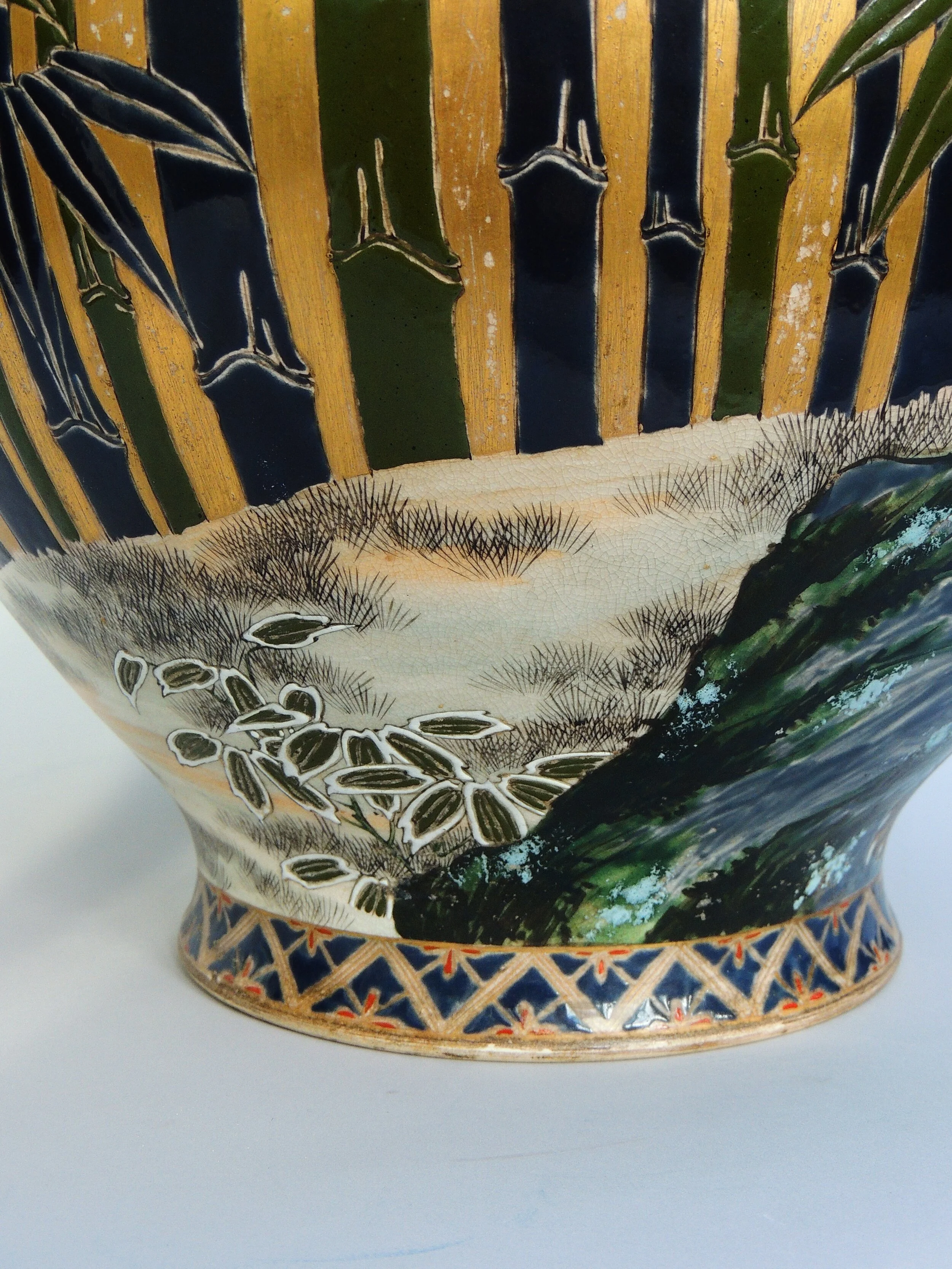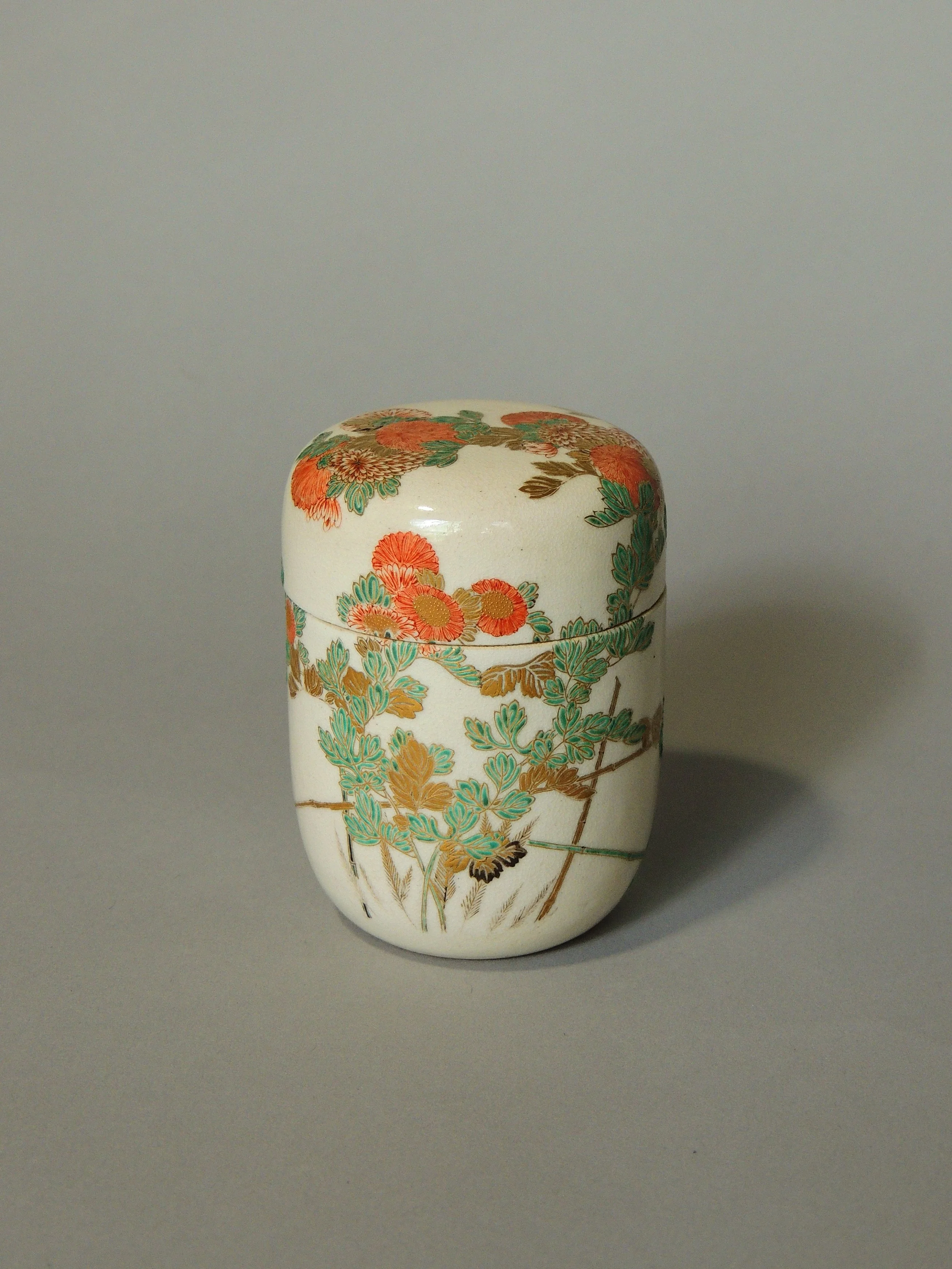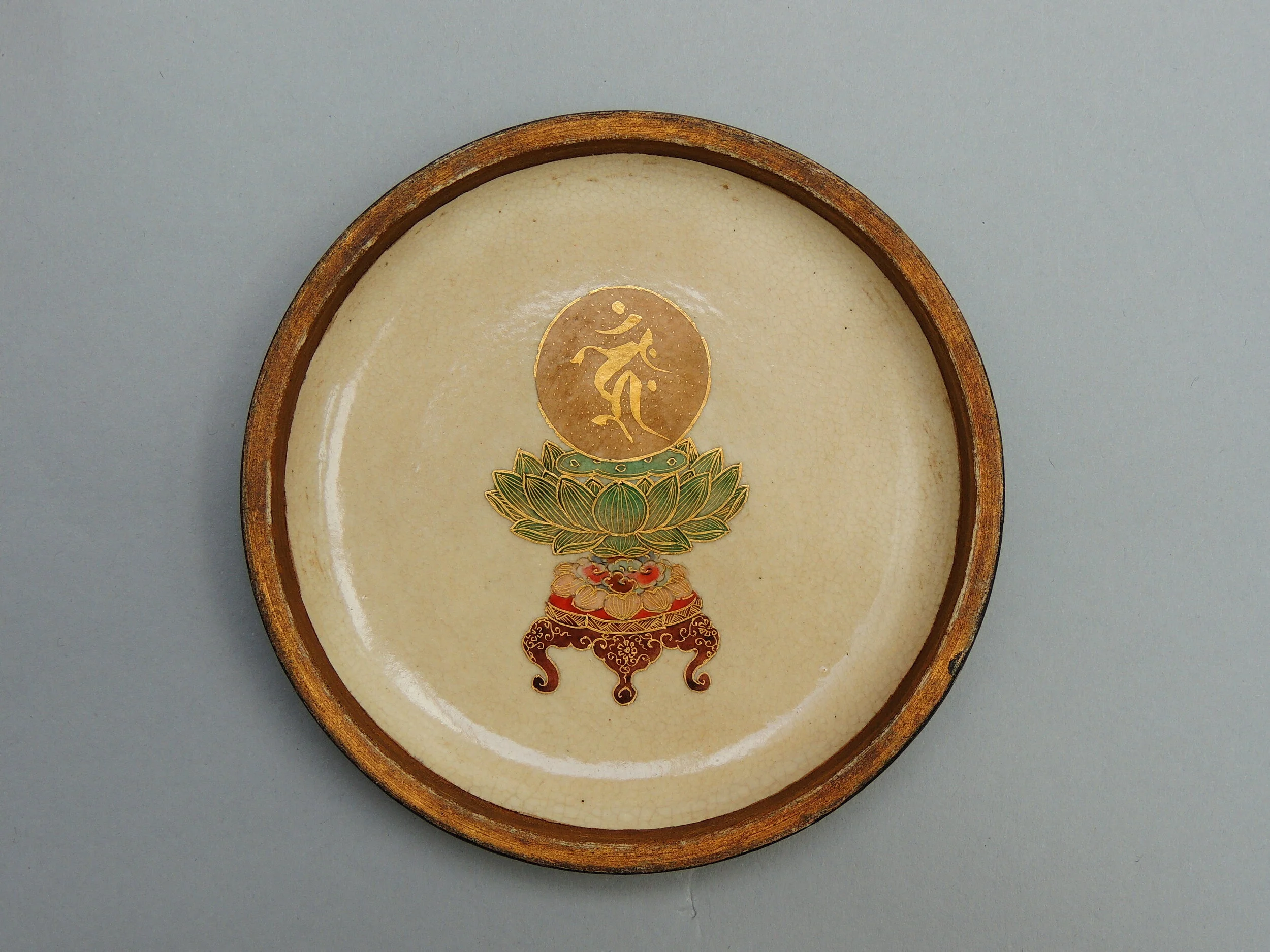Print by Kitagawa Utamaro (1750–1806)
Meizan workshop
Meiji period, 19/20th century
1868-1912
Vase
A huge satsuma vase of a tiger in a bamboo forest, painted in enamel on a crackle glaze. Blue and green bamboo cover most of the body with gold dividing each stem. A tiger snarling while walking through water and frost covers bamboo leaves at his feet. This tiger looks more like it is of the dog variety while it has striped fur and a long tail with clawed paws it has an uncharacteristic elongated jaw more like a dog or wolf.
Tigers have not been in Japan for hundreds of years and most Japanese would only know of them through descriptions of simple drawings. Often images of tigers look more like dogs or domesticated cats. Only those Japanese having travelled to China of Korea may have had a chance of seeing a tiger in the wild. The artist that had painted the tiger on this vase would have most likely used Edo period woodblock prints as inspiration having copied what he thought a tiger may have looked like.
380mm x 360mm
Signed Meizan workshop







